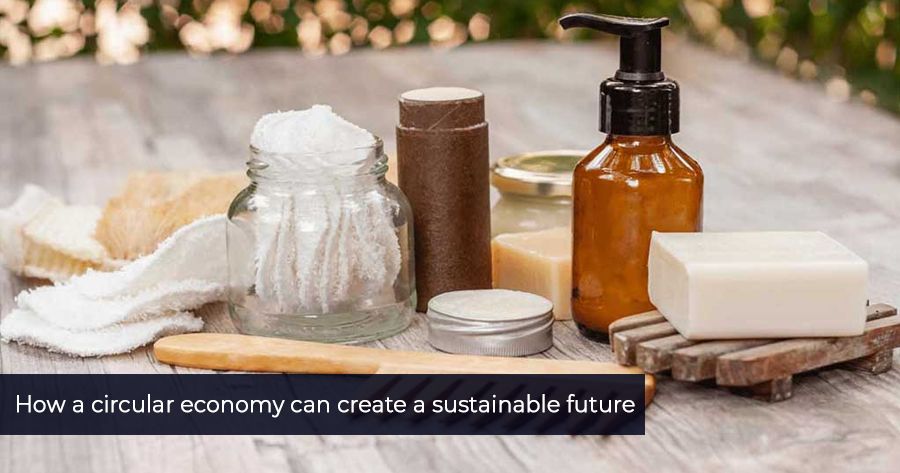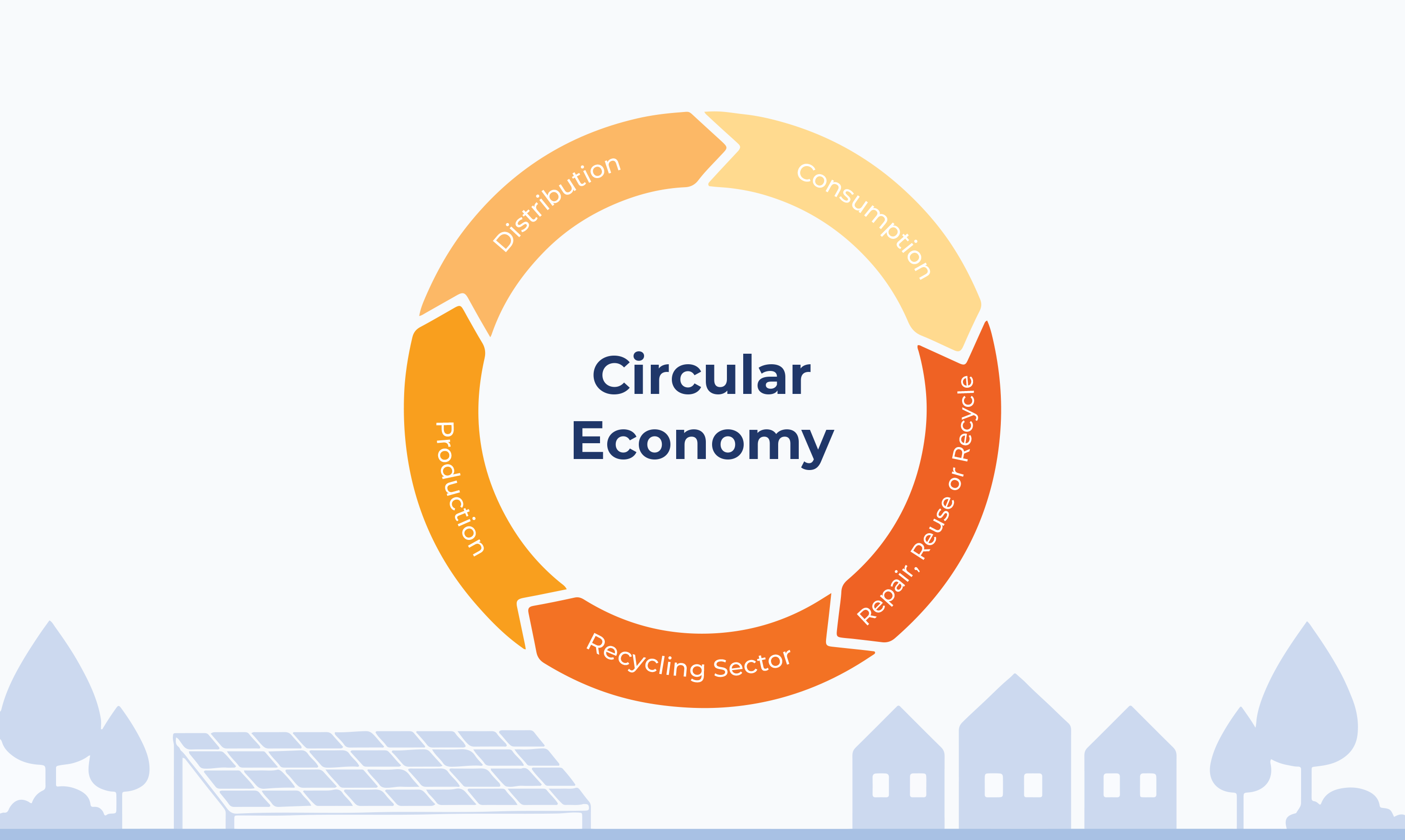How a Circular Economy Can Create a Sustainable Future

With the climate challenges we all face these days, it is imperative that we change how we use our limited resources. The vast majority of consumer products are manufactured on a ‘take-make-waste’ model, and because of this it’s no wonder that we live in a throwaway society. Unfortunately, the implications of this “throwaway” mentality are wreaking having on our environment.
Because of this, many businesses and organisations are working towards a circular economy in an effort to reduce their output of waste and consumption of resources, with the aim to create a more sustainable future.
What is a circular economy?
A circular economy is the idea that materials are used in a closed loop, where resources are created once and reused repeatedly. This approach could help us tackle the tonnes of waste entering our landfills, oceans, and environment.
In contrast to the traditional linear model of using finite resources to produce disposable products which end up in landfill once they are past their useful life, in a circular economy, manufacturers design products specifically so they are able to be reused. A circular economy is based on three principles:
- Actively design away waste and pollution
- Keep reusing products and materials
- Regenerate natural systems.
A circular economy is a holistic, regenerative approach, designed to maximise the benefits of economic development for companies, society, and the environment.

Consumers demand action
As consumers demand businesses respond more aggressively to climate change, more brands are looking to participate in the circular economy. It’s likely in the near future that we’ll begin to see changes implemented throughout the entire production process, beginning with an emphasis on sustainability in the design stage of product development. As consumers demand accountability, it’s expected that businesses will report on their participation in a circular economy, just as they would for revenue and shareholder value.
A circular economy in full swing
Circular economy advocate, Loop (owned by recycling stalwart, TerraCycle), will begin trialling reusable and refillable packaging for consumer products in Australia online and in select Woolworths stores in 2021. Loop currently designs packaging alternatives for big brands such as Häagen-Dazs ice-cream, Nestlé, Dove, and Nivea.
In the UK, Loop has also partnered with McDonalds to provide customers with the option to have their takeaway hot drinks served in reusable cups which can then be placed in a special bin where they are collected, steralised and reused again and again.
Levi’s also participates in a circular economy scheme, paying customers to return old pairs of jeans, where they resell them on a second-hand marketplace. This process can significantly reduce, if not completely avoid, the climate impact of making the same product from new materials.
It’s also hoped that governments will start to enforce stricter policies and enact new laws that support a circular economy. Policy measures, such as banning single-use plastics, are already prevalent.
What about solar?
You might be wondering how the solar industry is participating in the circular economy. For now, unfortunately only some panel components can be recycled. 95% of the glass components in silicone-based panels are reusable, with silicon particles broken down using acid and reused to produce new silicon modules. 95% of the semiconductor materials in thin-film panels are reused, along with 90% of the glass components.
Recycling for solar is particularly important, not only to avoid excess waste but because recycling solar PV panels can unlock a large amount of valuable raw materials and components that can be used to manufacture more solar PV panels or sold into global commodity markets. Solar PV panels also contain rare elements like tellurium and indium, making their re-use essential. Similarly, solar PV panels can also contain potentially hazardous materials like lead, selenium and cadmium, which should be captured and recycled to prevent leaching into soil and water.
Research and funding into solar recycling is set to increase over the next decade as awareness of the issue grows, and new companies like South Australia’s Reclaim PV emerge to help solve the solar recycling issue.
How can you participate in the circular economy?
Small changes, like switching to a reusable cup for takeaway coffee, only buying items you know you’ll use, and using your recycling bins correctly can make a huge difference. Simply being conscious of items you purchase and thinking about how you will use and eventually recycle them can be a great first step.
The future is circular
Our waste crisis is real and moving to a circular economy is a realistic and practical solution. As consumers, we can all do our part by choosing to purchase from brands that actively participate in initiatives to support a circular economy. As more brands participate, the circular economy will eventually become the new norm.
If you’d like information on how solar can help to reduce the carbon footprint of your home or business, contact us today and one of our expert energy consultants will be happy to assist you.


